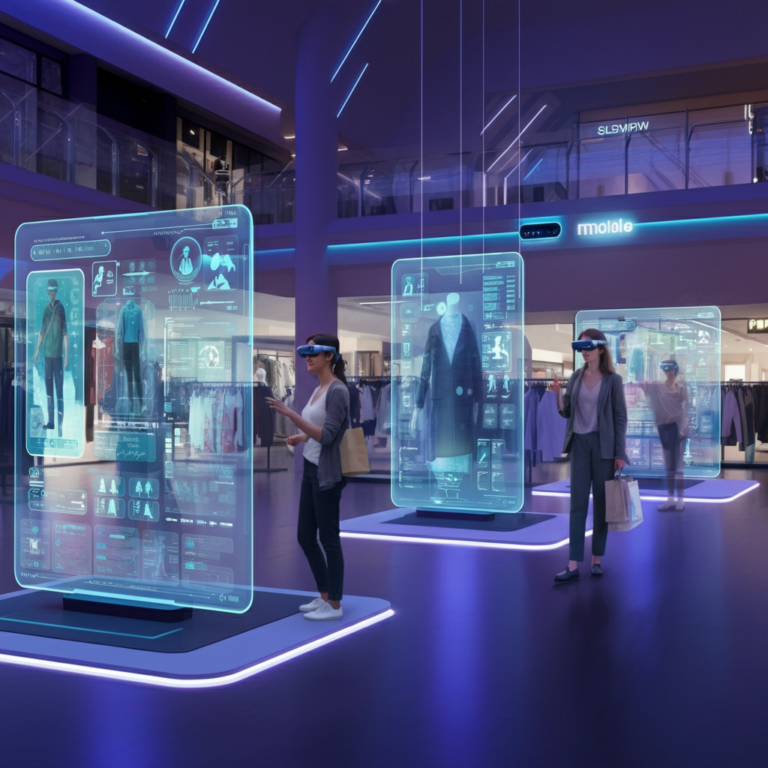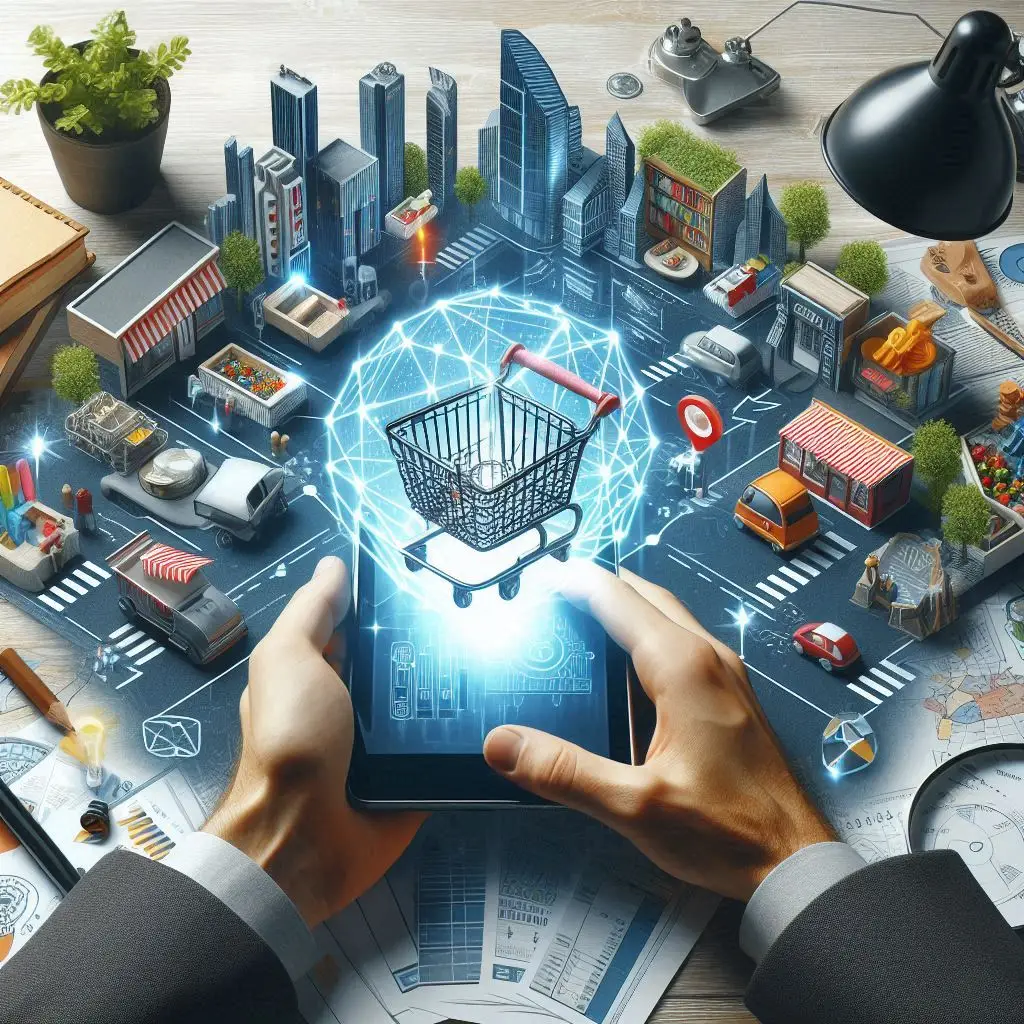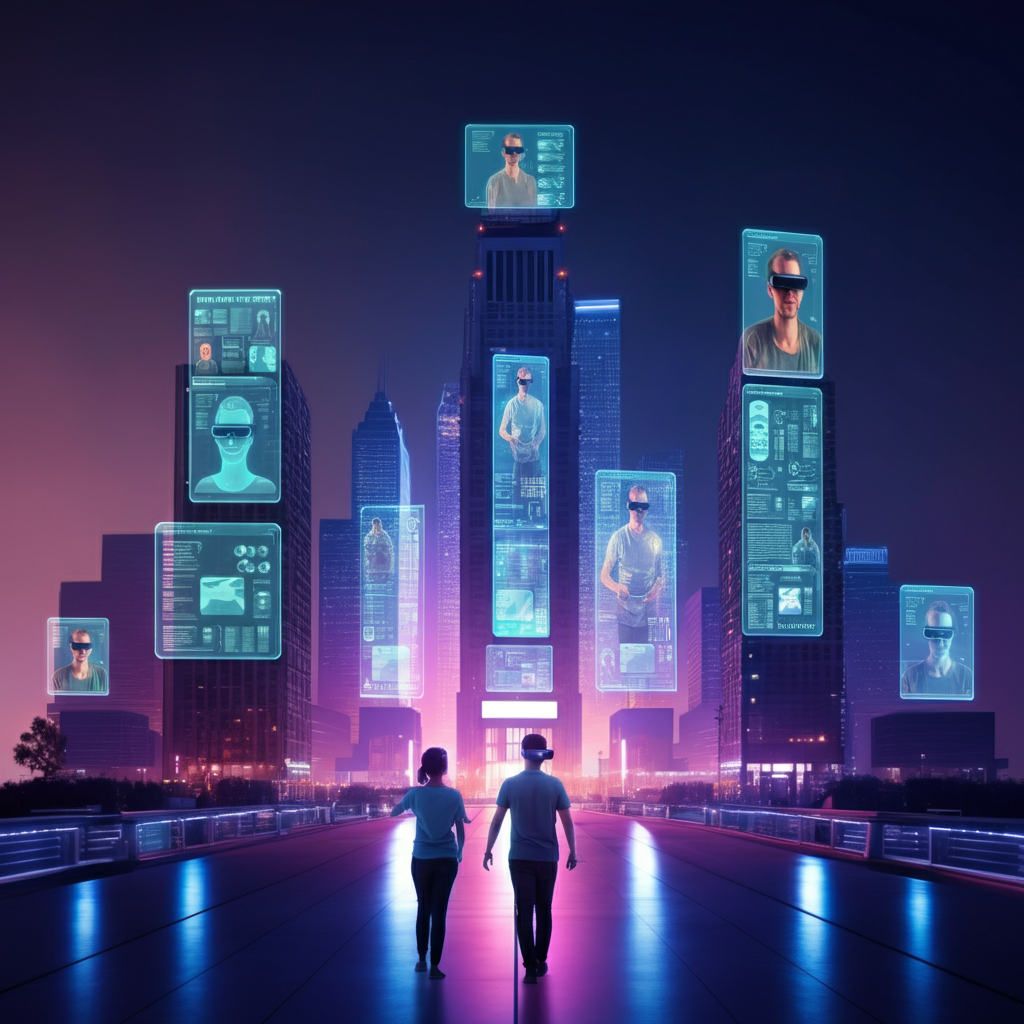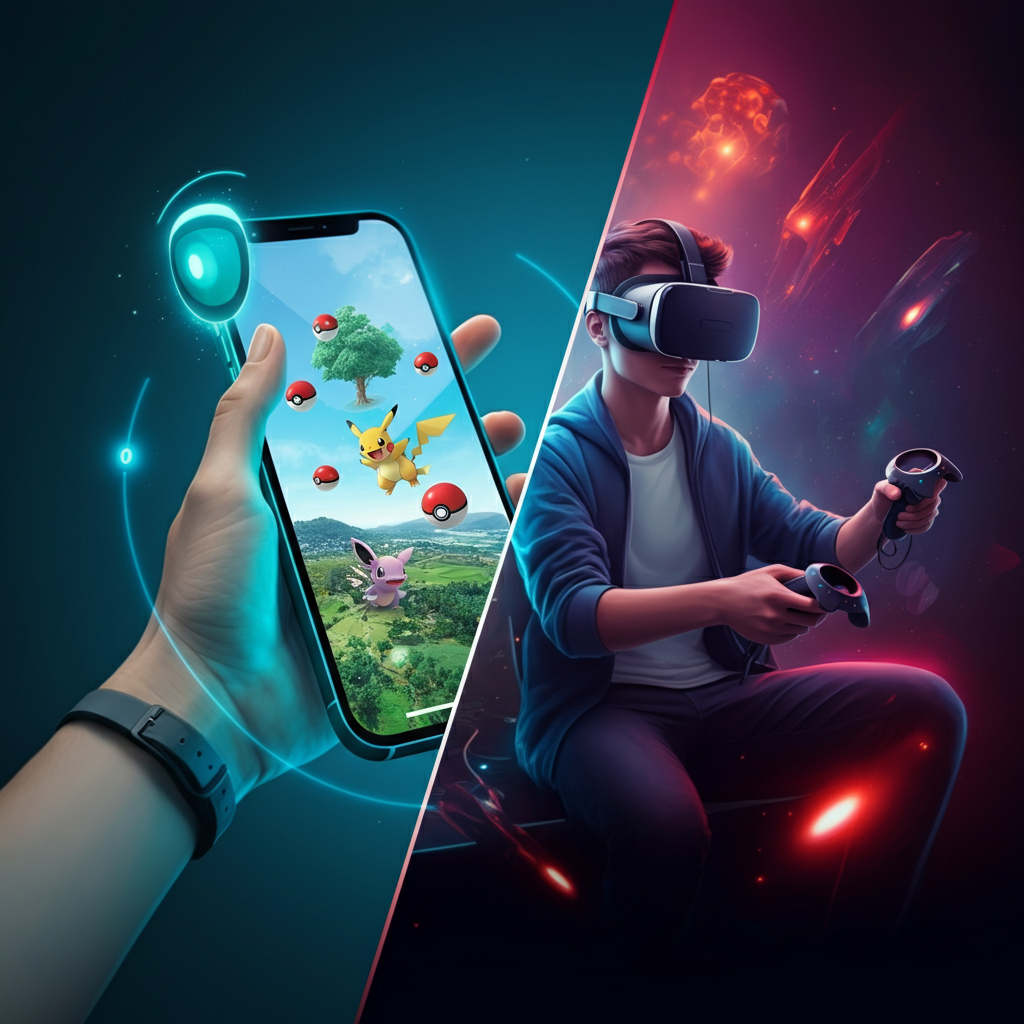Future of Shopping: Imagine putting on clothing without having to enter a changing room or getting a sneak peek at how a new couch would appear in your living room without having to do any heavy lifting. All of this is made possible by augmented reality (AR), which is revolutionizing both in-person and online shopping. Though AR initially captivated us through social media and games (think Pokémon Go or Snapchat filters), it is already revolutionizing e-commerce and retail by bridging the gap between the virtual and real worlds.
There are many drawbacks to online purchasing, such as the inability for buyers to see how a product will fit or appear in person and the high rate of returns for unfulfilled expectations. AR can help with these problems at this time. Customers may make more informed purchases and create genuinely memorable retail experiences with AR’s immersive, interactive experiences.
This blog examines how augmented reality (AR) is transforming e-commerce and retail, outlining its uses, benefits, and how companies may start utilizing this innovative technology.
AR’s Ascent in E-Commerce and Retail

AR is already a fundamental aspect of the retail environment rather than merely a futuristic idea. According to recent data, 61% of consumers choose stores that provide augmented reality experiences, and products with AR content have an astounding 94% higher chance of being seen than those without. These figures demonstrate how AR is changing consumer expectations and pushing companies to use it in order to remain competitive.
AR technology: what is it?
For those who are unfamiliar, augmented reality, or AR, uses gadgets like smartphones, tablets, or AR glasses to superimpose digitally created material, like 3D pictures or animations, onto the physical world. AR adds interactive features to our existing surroundings, in contrast to Virtual Reality (VR), which immerses users in an entirely manufactured environment.
The Reasons Behind the Rapid Adoption of AR
The broad use of AR in retail and e-commerce is being driven by several factors:
- Technological Progress: Smoother and more accessible AR experiences are made possible by faster devices, better cameras, and 5G connectivity.
- Changing Consumer Behavior: As online retail keeps expanding, customers are expecting more individualized and interactive purchasing experiences.
Future of Shopping – How Augmented Reality Improves the Client Experience
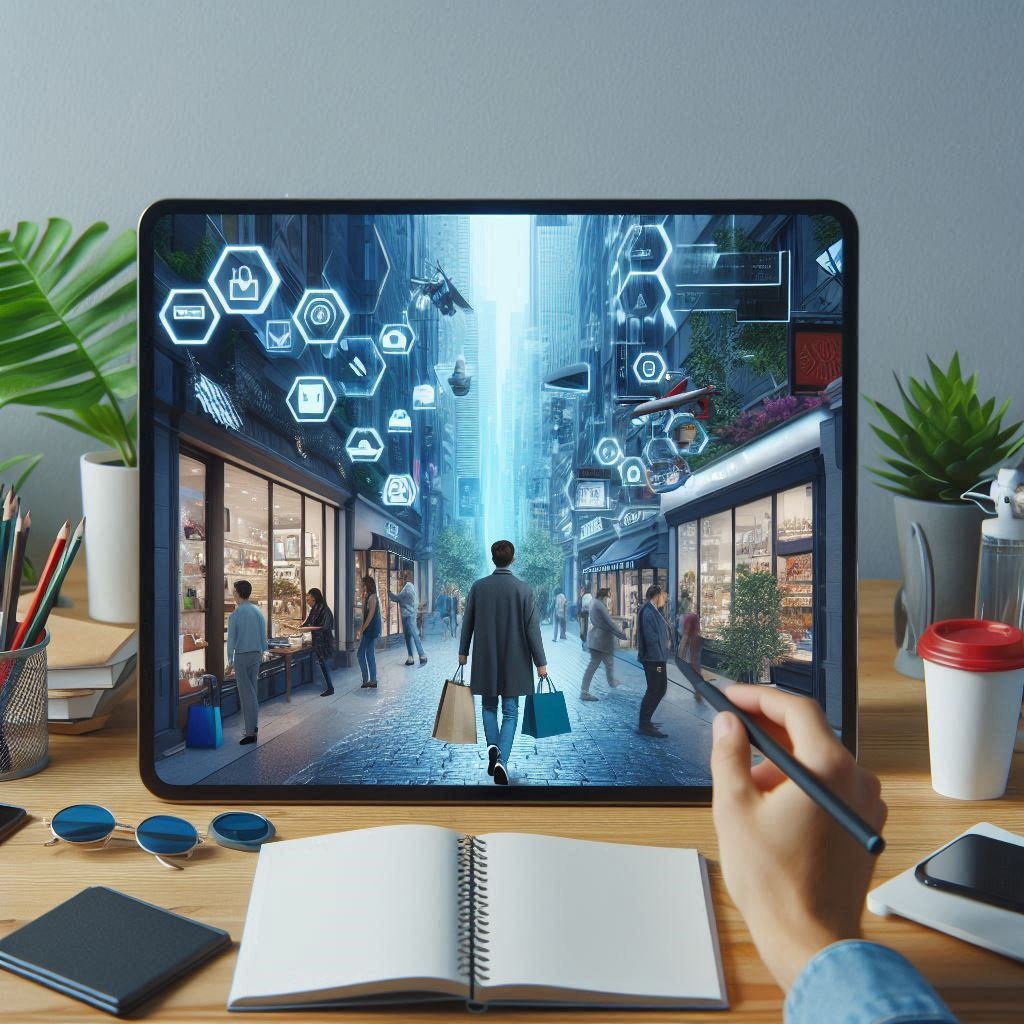
From product discovery to post-purchase delight, augmented reality (AR) delivers value at many points in the customer journey. Here’s how:
Virtual Try-On for Accessories and Clothing
The days of worrying if the outfit will fit properly or if those sunglasses will look good on your face are long gone. So, do you want to know the future of shopping? Customers may use their cellphones to see how things will look thanks to augmented reality-powered virtual try-on technology.
Real-world examples: Zara’s AR fitting rooms, which display digital pictures to help shoppers see how clothing would look and move, and Warby Parker’s app, which lets users virtually put on spectacles.
This lessens the possibility of returns while resolving fit and style uncertainty, one of the main problems with internet shopping.
Visualization of Interactive Products
AR is a whole new level of “try before you buy.” Consumers can see how things fit with their surroundings by placing digital copies of them there.
Real-world example: By utilizing the camera on their phone to project 3D models into their living area, customers of IKEA’s Place app may see the furniture they will have in their house.
Customers are more satisfied and have less post-purchase regret when they feel more confidence in their decisions thanks to this participatory method.
Gamification of the Purchasing Process
AR turns boring browsing into a fun and interesting activity by fusing shopping and entertainment. For example, scavenger hunts might inspire consumers to engage creatively with a store’s merchandise.
Real-world example: Sephora uses augmented reality (AR) to develop gamified experiences that allow users to try out different beauty styles in an entertaining virtual environment.
In addition to enhancing the shopping experience, this extra layer of enjoyment increases brand loyalty.
Advantages for Businesses of Using AR
Beyond enhancing consumer delight, augmented reality offers measurable business outcomes.
Higher Conversion Rates for Sales
By providing customers the confidence to buy, augmented reality (AR) can boost engagement and sales. Research indicates that using augmented reality (AR) to preview products can increase conversion rates by up to 40%.
Decreased Rates of Returns
AR drastically lowers the need for returns by empowering customers to make knowledgeable selections. Businesses can save time and money by using technologies like virtual try-ons to make sure customers receive exactly what they anticipate. It is now the future of shopping.
Increased Brand Loyalty and Retention of Customers
Relationships that last are frequently the result of memorable AR experiences. Businesses that make AR investments distinguish themselves as creative, customer-focused businesses, which eventually increase retention and loyalty.
AR in Physical Retail vs. E-Commerce
AR has a significant impact in both online and physical retail, despite the fact that its applications vary.
Applications for E-Commerce
One of the main drawbacks of internet buying is the inability to physically engage with things; AR fills this gap. Customers may get the tactile feel they want without ever leaving their homes thanks to virtual try-ons and 3D product images.
Applications in Physical Retail
Through tools like AR mirrors or navigation features that direct customers to products, augmented reality (AR) improves in-store involvement for physical stores. Traditional establishments can be revitalized by this contemporary touch, which will encourage customers to come back. So now the future of shopping is in AR.
An Illustration of Achievement in Both Areas
L’Oréal is a prime example, providing a smooth omnichannel experience with interactive AR kiosks in its retail locations and AR-powered makeup try-ons via its app for online buyers.
Issues & Things to Think About When Adopting AR
Even if AR has a ton of potential, there are challenges in putting it into practice:
- High Upfront Costs: ROI is a crucial consideration because developing AR solutions can be costly.
- Integration with Current Platforms: It may be technically difficult to integrate AR with current inventory management or e-commerce platforms.
- Accessibility Concerns: To guarantee usability for all users, AR applications need to work on a variety of platforms and devices.
Overcoming Obstacles
Begin modestly. Before expanding, try out simple AR features like Instagram filters or AR product demos.
How to Include AR in Your E-Commerce or Retail Strategy
Step 1: Establish Specific Goals
Establish clear objectives, like “Decrease return rates by 20%” or “Increase customer engagement by 30%.”
Step 2: Select the Appropriate AR Technology Provider
To guarantee flawless execution, work with top AR suppliers like Snap AR or Niantic.
Step 3: Scale, Learn, and Test
Before a full launch, introduce AR features on a modest scale, get user feedback, and make adjustments.
Step 4: Inform Your Clients
To assist clients comprehend and appreciate your augmented reality solutions, offer tutorials, frequently asked questions, or in-store demonstrations.
What Does AR’s Future Hold for Retail and E-Commerce?
With developments like 5G connection, AR-enabled NFTs, and augmented reality glasses imminent, the future of AR is bright. It may soon be possible to envision a completely immersive online store that adjusts its design and product offerings to your tastes.
Businesses can fully utilize AR and create remarkable retail experiences by staying ahead of these trends.
Convert Purchasing into an Experience
AR is combining ease with immersive experiences to transform e-commerce and retail. This is a strategic imperative for businesses, not just a fad in technology. AR offers several opportunities to set your brand apart from the competition, whether you’re an e-commerce company trying to lower returns or a retailer hoping to engage in-store customers.
Uncertain about where to begin? To find out how AR can change your company, get in touch with us right now.

